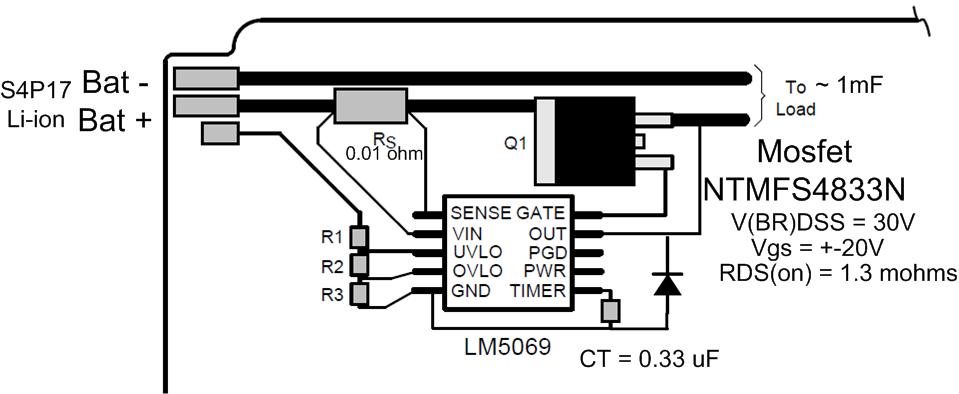Hello all.
You can see simplified block scheme of my board below.
I want to limit the inrush current which originates from plugging in power supply and battery.
For instance, if I use LM5069 as hot swap controller connected from charger to battery -
it would protect from inrush current coming from battery, but would I be able to charge the battery? It is reverse current according to hot swap controller.
Is there any better solutions?





